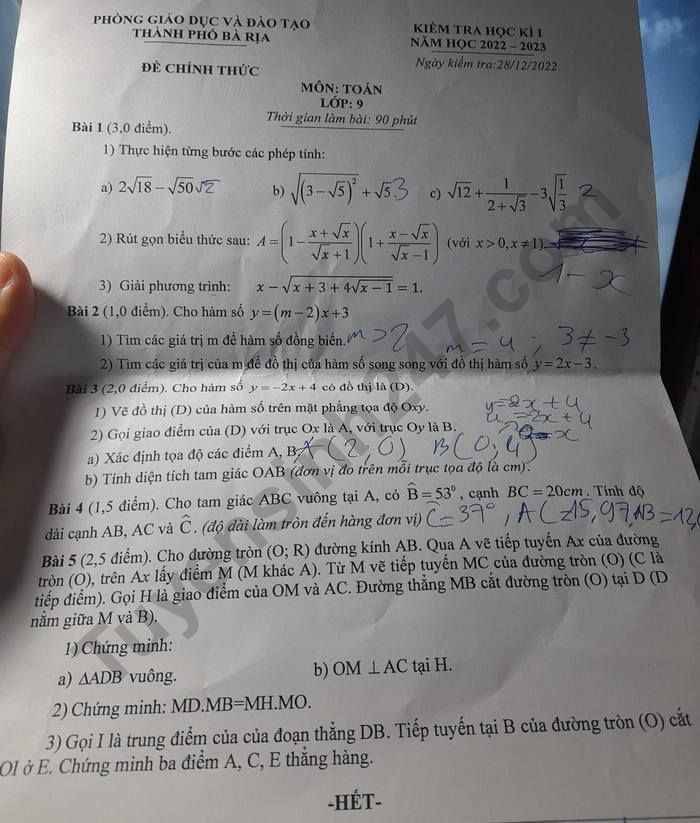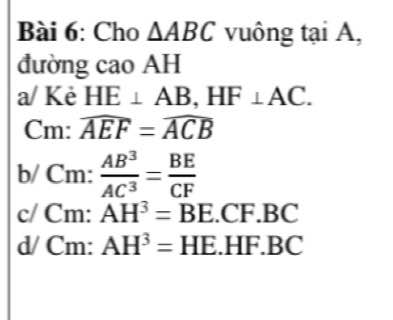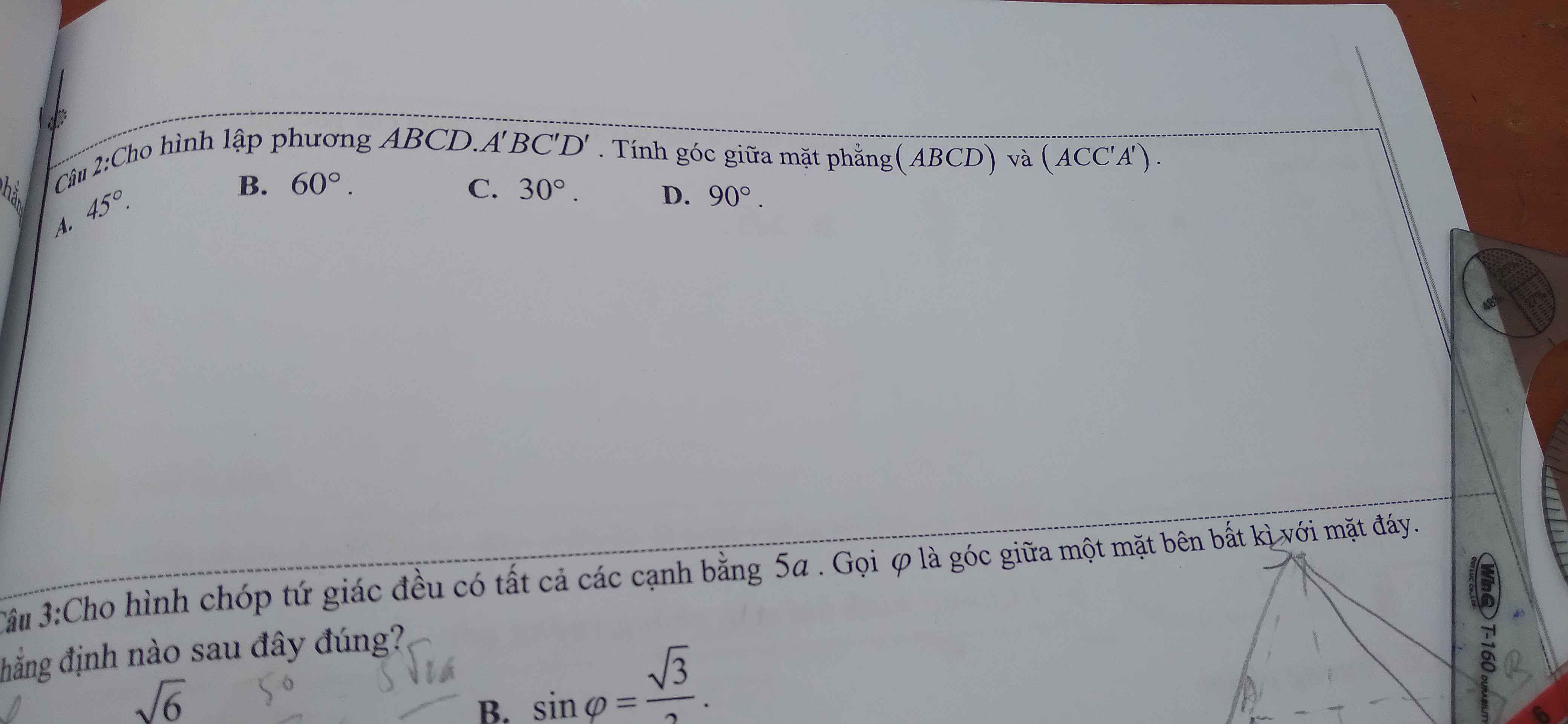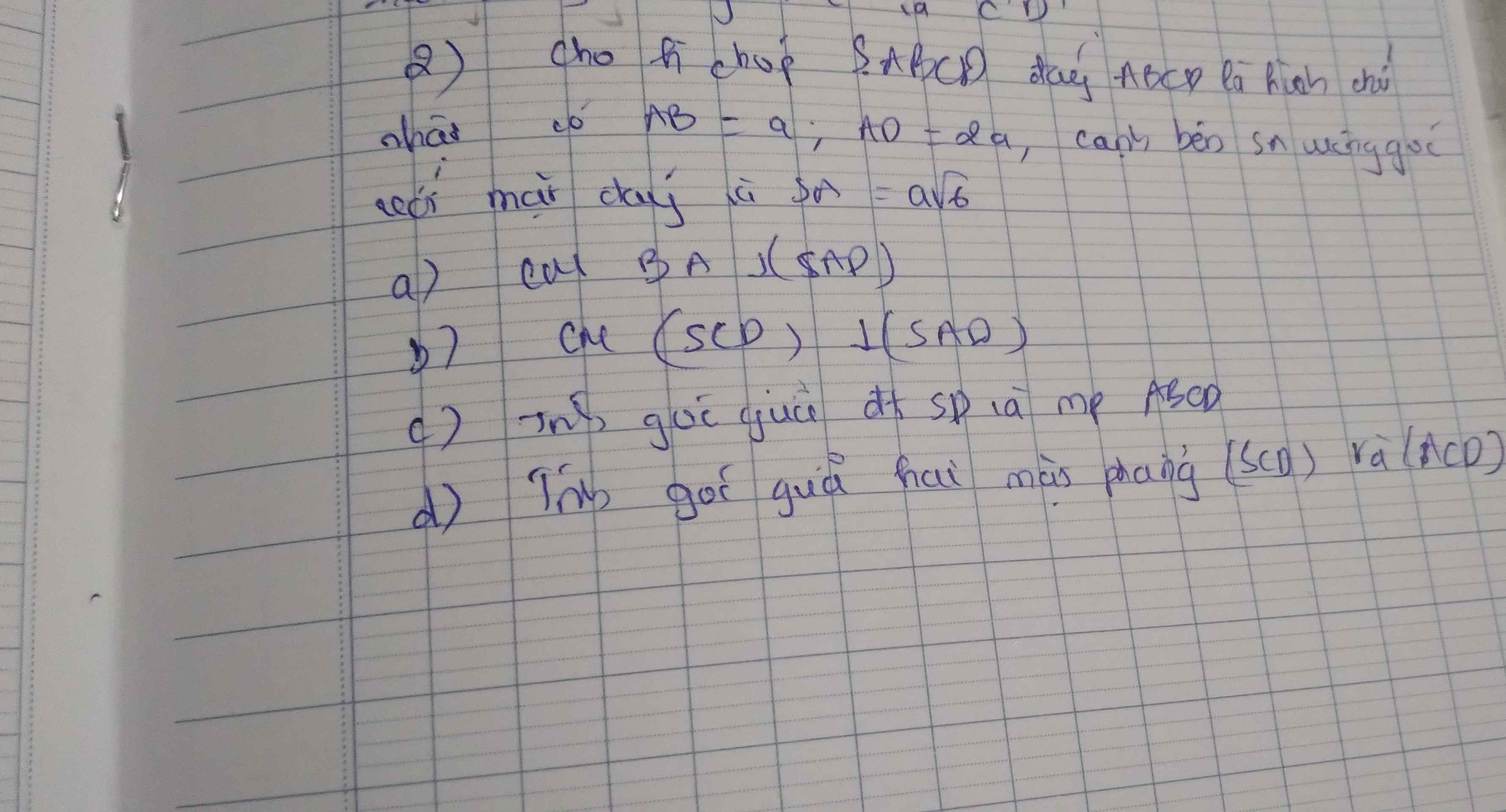giải giúp e đi ạ
Hãy nhập câu hỏi của bạn vào đây, nếu là tài khoản VIP, bạn sẽ được ưu tiên trả lời.



bạn tham khảo nha
\(\Leftrightarrow\dfrac{1-cos2x}{2}+\dfrac{1-cos6x}{2}-1-cos4x=0\\ \Leftrightarrow1-cos2x+1-cos6x-2-2cos4x=0\\ \Leftrightarrow cos2x+cos6x+2cos4x=0\\ \Leftrightarrow cos4x.cos2x+cos4x=0\\ \Leftrightarrow cos4x\left(cos2x+1\right)=0\\ \Leftrightarrow\left[{}\begin{matrix}x=\dfrac{\pi}{8}+\dfrac{k\pi}{4}\\x=\dfrac{\pi}{2}+k\pi\end{matrix}\right.\)

Bài 1:
3: ĐKXĐ: x>=1
\(x-\sqrt{x+3+4\sqrt{x-1}}=1\)
=>\(x-\sqrt{x-1+2\cdot\sqrt{x-1}\cdot2+4}=1\)
=>\(x-\sqrt{\left(\sqrt{x-1}+2\right)^2}=1\)
=>\(x-\left|\sqrt{x-1}+2\right|=1\)
=>\(x-\left(\sqrt{x-1}+2\right)=1\)
=>\(x-\sqrt{x-1}-2-1=0\)
=>\(x-1-\sqrt{x-1}-2=0\)
=>\(\left(\sqrt{x-1}\right)^2-2\sqrt{x-1}+\sqrt{x-1}-2=0\)
=>\(\left(\sqrt{x-1}-2\right)\left(\sqrt{x-1}+1\right)=0\)
=>\(\sqrt{x-1}-2=0\)
=>\(\sqrt{x-1}=2\)
=>x-1=4
=>x=5(nhận)

Câu 3e
\(\left(2x+1\right)^2=\left(x-1\right)^2\)
\(\left[{}\begin{matrix}2x+1=x-1\\2x+1=1-x\end{matrix}\right.\Leftrightarrow\left[{}\begin{matrix}x=-2\\x=0\end{matrix}\right.\)

a: Xét ΔAHB vuông tại H có HE là đường cao ứng với cạnh huyền AB, ta được:
\(AE\cdot AB=AH^2\left(1\right)\)
Xét ΔHAC vuông tại H có HF là đường cao ứng với cạnh huyền AC, ta được:
\(AF\cdot AC=AH^2\left(2\right)\)
Từ (1) và (2) suy ra \(AE\cdot AB=AF\cdot AC\)
hay \(\dfrac{AE}{AC}=\dfrac{AF}{AB}\)
Xét ΔAEF vuông tại A và ΔACB vuông tại A có
\(\dfrac{AE}{AC}=\dfrac{AF}{AB}\)
Do đó: ΔAEF\(\sim\)ΔACB
Suy ra: \(\widehat{AEF}=\widehat{ACB}\)


Ta có: AA'\(\perp\)(ABCD) (giả thiết).
Suy ra, (ABCD)\(\perp\)(ACC'A').
Vậy góc tạo bởi hai mặt phẳng đã cho là 90o.
Chọn D.

a: BA vuông góc AD
BA vuông góc SA
=>BA vuông góc (SAD)
b: CD vuông góc AD
CD vuông góc SA
=>CD vuông góc (SAD)
=>(SCD) vuông góc (SAD)
c: (SD;(ABCD))=(DS;DA)=góc SDA
tan SDA=SA/AD=căn 6/2
=>góc SDA=51 độ







Ở đây ta dùng công thức:
\(\sin x+\cos x=\sqrt{2}\sin\left(x+\dfrac{\pi}{4}\right)\) và \(\sin x-\cos x=\sqrt{2}\cos\left(x+\dfrac{\pi}{4}\right)\)
PT
\(\Leftrightarrow\sin\left(\dfrac{3x}{2}+\dfrac{\pi}{4}\right)=3\cos\left(\dfrac{x}{2}+\dfrac{\pi}{4}\right)\)
\(\Leftrightarrow\sin\dfrac{3x}{2}+\cos\dfrac{3x}{2}=3\left(\sin\dfrac{x}{2}-\cos\dfrac{x}{2}\right)\)
Đặt \(t=\dfrac{x}{2}\)(Mình đặt lại để dễ nhìn)
Pt trở thành:
\(\sin3t+\cos3t=3(\sin t-\cos t)\)
\(\Leftrightarrow\left(3\sin t-4\sin^3t\right)+\left(4\cos^3t-3\cos t\right)=3\left(\sin t-\cos t\right)\)
\(\Leftrightarrow\sin^3t-\cos^3t=0\)
\(\Leftrightarrow\left(\sin t-\cos t\right)\left(1+\dfrac{\sin2t}{2}\right)=0\)
\(\Leftrightarrow\cos\left(t+\dfrac{\pi}{4}\right)=0\) (Do \(1+\dfrac{\sin2t}{2}>0\))
\(\Leftrightarrow t=\dfrac{\pi}{4}+k\pi\left(k\in Z\right)\)
hay \(x=\dfrac{\pi}{2}+k2\pi\)
Đặt \(\dfrac{\pi}{4}-\dfrac{x}{2}=t\Rightarrow\dfrac{x}{2}=\dfrac{\pi}{4}-t\)
\(\Rightarrow\dfrac{\pi}{4}+\dfrac{3x}{2}=\dfrac{\pi}{4}+3\left(\dfrac{\pi}{4}-t\right)=\pi-3t\)
Phương trình trở thành:
\(sin\left(\pi-3t\right)=3sint\)
\(\Leftrightarrow sin3t=3sint\)
\(\Leftrightarrow3sint-4sin^3t=3sint\)
\(\Leftrightarrow sint=0\)
\(\Rightarrow t=k\pi\)
\(\Rightarrow\dfrac{\pi}{4}-\dfrac{x}{2}=k\pi\)
\(\Rightarrow x=\dfrac{\pi}{2}+k2\pi\)